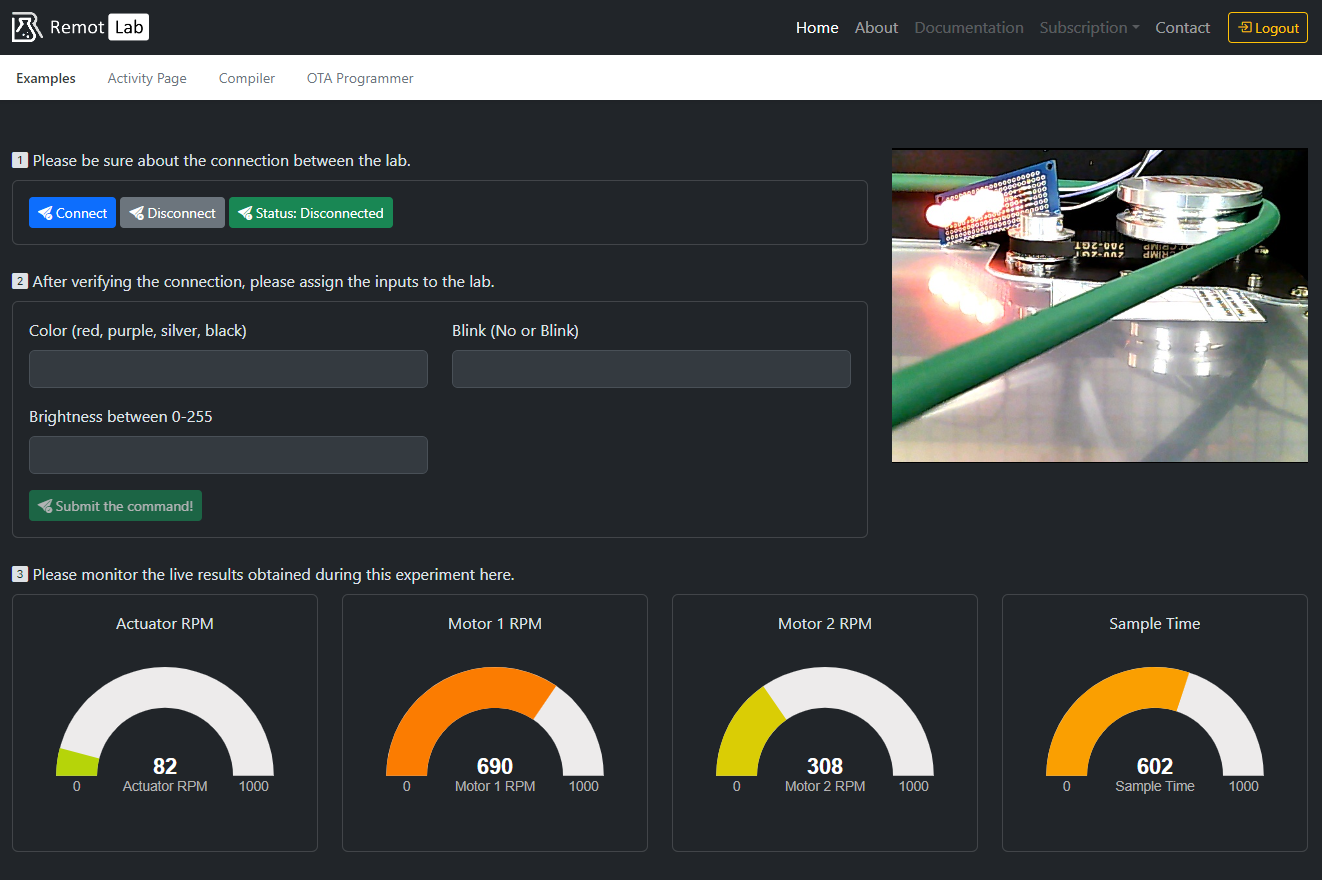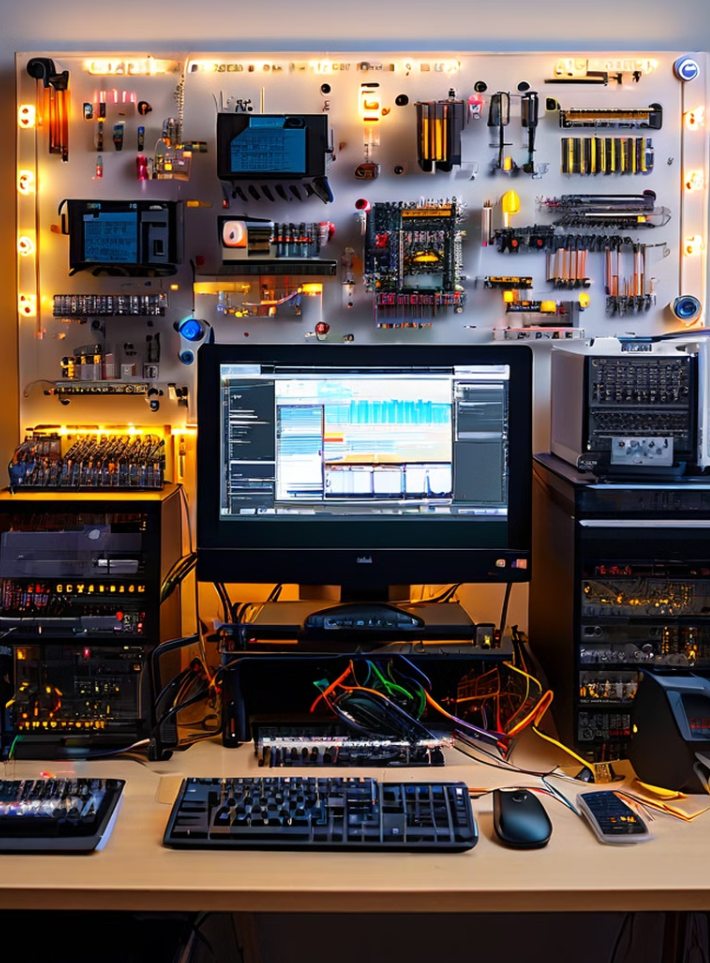Welcome to RemotLab v2.0
Discover the future of remote experimentation with RemotLab v2.0, currently in its beta phase. This version provides early access to the platform’s core functionalities, offering a streamlined, backend-focused experience.
RemotLab is a cutting-edge hardware and software platform engineered to support education, research, development, testing, and prototyping. Access an extensive array of experimental devices and tools, all available remotely, enabling flexible and efficient workflows across multiple disciplines.
14
Laboratories
30
Activities
38
Tasks
78
Components
Developed user interface
A sophisticated user interface has been developed to provide real-time results and enable live-streaming for monitoring the system's operational status.
Live Stream
Access experimental devices and tools remotely from any location with an internet connection.
Remote Monitoring
Access and monitor your experiments from anywhere in the world using a secure internet connection.
Real-time Data
View live data streams, track experiment progress, and receive real-time notifications on your mobile device or computer.
Remote Control
Adjust experiment parameters, initiate protocols, and control equipment remotely, enabling you to work from anywhere.

Laboratories
RemotLab allows access to various remotely accessible labs across multiple disciplines. These labs support scientific research, education, and academic collaboration without requiring physical presence. This remote access enhances both the scope and flexibility of your work in science and engineering.

Compiling and Uploading Software
Microcontrollers and remote controllable kits are powerful tools for innovation. They offer a wide range of possibilities for building, experimenting, and creating. By mastering the basics and following best practices, you can unlock the potential of these technologies and push the boundaries of what's possible.
Writing Code
First, you'll write code in a programming language specific to your microcontroller. C++ is commonly used for its versatility and efficiency.
Compiling Code
The compiler translates your code into machine language that the microcontroller can understand. This process is like translating a human language into a language a computer can speak.
Uploading Software
Using a programmer or a debugger, you upload the compiled code to the microcontroller's memory. This is like sending a message to the microcontroller to follow the instructions in your code.
Recent Updates
Object: Inverted Pendulum - Version 1.0
Posted on 2025-04-28 10:18:08
P controller activity for the card position has been created.
Object: AGV Automation Kit - Version 1.0
Posted on 2025-03-18 08:58:30
We’re excited to introduce our new AGV system designed for educational and practical applications. This system features a line-following robot equipped with IR sensors for precise path tracking and an ESP32-based control system for smooth navigation. Additionally, a dual-level elevator mechanism allows the robot to pick up or place objects efficiently using servo motors and a lead screw system. This AGV system is ideal for teaching control systems, automation concepts, and mechanical design, offering students a hands-on experience in robotics and smart manufacturing. Perfect for both learning and practical demonstrations!
Object: Ball and Beam Kit - Version 1.0
Posted on 2024-12-10 11:37:10
We’re thrilled to introduce the "Ball on Beam System," a hands-on platform for exploring control system dynamics and balance control. This lab enables real-time testing of PID controllers, feedback mechanisms, and stability analysis. Perfect for education and research, it’s a must-have for control systems enthusiasts!